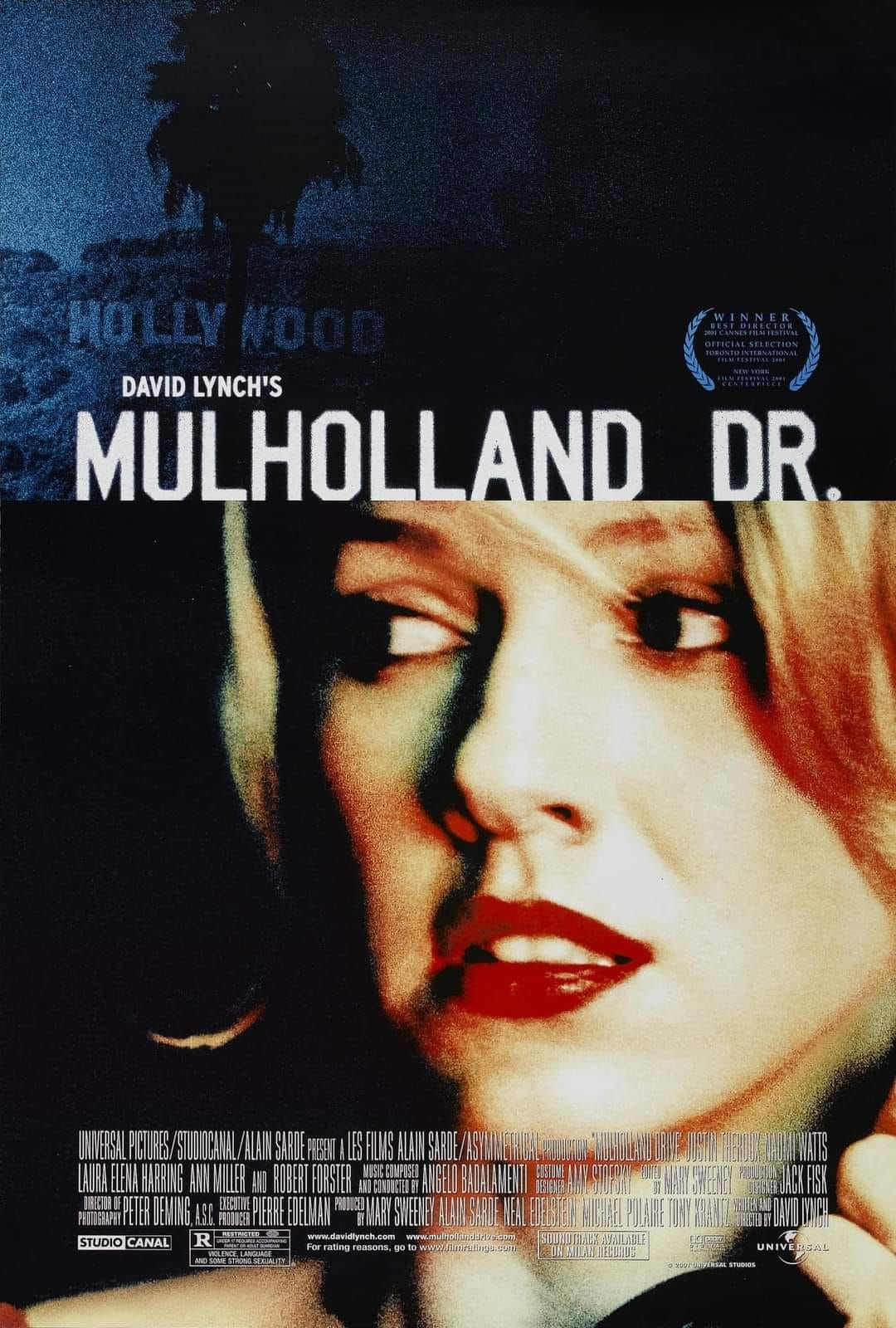Mulholland Drive (2001)

David Lynch’s Mulholland Drive is a cinematic masterpiece that continues to captivate audiences and critics alike since its release in 2001. Blending elements of neo-noir, psychological thriller, and surrealism, the film stands out as one of the most enigmatic works of the 21st century.
Plot Overview
The film opens with a car crash on the infamous Mulholland Drive in Los Angeles, where a woman (played by Laura Harring) survives an accident but loses her memory. She is discovered by Betty Elms (played by Naomi Watts), an aspiring actress who has just arrived in Hollywood with dreams of stardom. As the two women try to unravel the mystery of the amnesiac’s identity, they become embroiled in a labyrinth of dreams, desires, and dark secrets. What begins as a simple story of friendship and identity quickly spirals into a complex narrative filled with twists, turns, and Lynch’s signature surrealism.
Themes and Symbolism
Mulholland Drive delves into themes of identity, the nature of reality, and the elusive nature of dreams. Lynch masterfully weaves together a narrative that challenges viewers to question what they perceive. The film serves as a critique of Hollywood, exposing the darker side of the entertainment industry and the often-unrealistic expectations placed on aspiring actors. Lynch uses symbols, such as the mysterious blue box, to represent memory and the hidden truths within each character’s psyche.

Cinematic Techniques
Lynch’s distinct visual style is evident throughout the film. The use of lighting, color, and camera angles creates an atmosphere of tension and intrigue. The haunting score by Angelo Badalamenti adds to the film’s unsettling mood, enhancing the emotional depth of key scenes. Lynch’s ability to evoke feelings of dread and fascination is unparalleled, drawing audiences into his intricate world.
Reception and Legacy
Upon its release, Mulholland Drive received widespread critical acclaim and won the Academy Award for Best Director for Lynch. The film has since been regarded as one of the greatest films of all time, often appearing on numerous critics’ lists and in discussions about the best cinematic achievements of the 21st century.
The film’s ambiguous nature has sparked extensive analysis and interpretation, allowing it to maintain relevance and intrigue over the years. Viewers often find themselves drawn back to the film, seeking to uncover hidden meanings and connections that may have eluded them on the first viewing.
Conclusion
Mulholland Drive remains a seminal work in David Lynch’s filmography, showcasing his unique ability to blur the lines between reality and illusion. With its mesmerizing performances, intricate storytelling, and haunting visuals, the film invites audiences to embark on a journey through the shadowy corners of Hollywood and the human psyche. For those who appreciate thought-provoking cinema, Mulholland Drive is a must-see experience that continues to resonate long after the credits roll.
Suggested videos for you:











